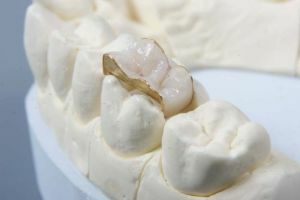 Human teeth are subjected to numerous loads for life and are often destroyed. But modern technology in dentistry contributes to the solution of this problem and helps with the restoration of significant damage to dental tissue.
Human teeth are subjected to numerous loads for life and are often destroyed. But modern technology in dentistry contributes to the solution of this problem and helps with the restoration of significant damage to dental tissue.
Special tabs are used today for qualitative restoration of functional and visual properties of teeth.
There are often situations where caries formations widen and deepen, affecting the walls of the teeth. Doctors in such situations do not always manage to properly perform the procedure of sealing, in addition, no one can guarantee the normal functionality of the tooth.
In such cases, the use of special tabs is practiced in dentistry.
Contents of
- What is it?
- Than the tab is better than the seals?
- Variety of solutions
- Method of manufacturing
- Installation process
- Indications and contraindications for use
- Practical experience on will replace either
- What does the cost of
depend on What is it?
The dental insert is an artificial miniature prosthesis mounted on the site of the removed damaged tissues to reproduce the anatomical shape of each tooth.
In fact, these tabs are like a seal created in a laboratory on a pre-made impression. This technology is one of the types of fixed prosthetics.
Aesthetic and visual characteristics significantly differentiate the dental tab from the ordinary seal. Such a prosthesis resembles the 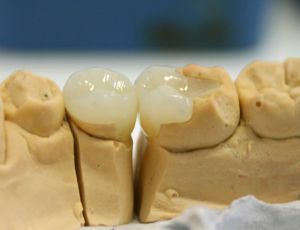 molar tooth particle with identical grooves and tubercles, has a similar coloring and shape. As a result of long-term manual work, you get a ready-made dental insert, ideally placed in a pre-prepared cavity.
molar tooth particle with identical grooves and tubercles, has a similar coloring and shape. As a result of long-term manual work, you get a ready-made dental insert, ideally placed in a pre-prepared cavity.
Most often, the tabs are installed by dentists on the back teeth. Such devices are often used in the process of prosthetics as supporting structures for bridge prostheses.
Than the tab is better than the seals?
Dissatisfaction with modern filling materials causes many attempts by scientists to look for new ways to replace hard tooth tissues. Universal material could be an excellent solution to the sealing problem, if it would be the most appropriate for all existing requirements.
But to this day such a material has not been developed, so in modern dentistry, a large number of different restorations are available.
The main negative quality of such materials is considered insufficient sealing. Each seal is peculiar to sit down in the polymerization process. Thus, the material eventually peels off, and crevices form between the tooth walls and the filling.
If the replacement of the fillings is carried out too often, there is a risk of widening and deepening the carious cavity and, as a result, complete destruction of the tooth. Teeth become weaker after re-turning. In some cases, crevices are formed between the teeth, which eventually leads to the development of functional pathology.
The installation of dental tabs has several significant advantages:
- Reliability and durability of .To create ceramic inlays, special dental porcelain is used, which is comparable in hardness with the most durable tooth enamel.
- The material does not shrink over time. It is because of the shrinkage that the fillings may fall over time. With ceramic inlays, this never happens.
- Longevity of the .The service life of the tabs is much higher than that of an ordinary seal. The average life of such devices is 7-10 years when installed even on teeth that are subject to the greatest damage.
- Convenience and comfort .When installing such devices, it is not necessary to keep the mouth open all the time, so that the saliva does not get into the treated area. The tab is fixed for several minutes.
- Accuracy of the .Carious formations never reappear under the tabs, due to the high accuracy of observing the required shape of the product when it is manufactured and adhering to the dental tissues.
- Resistant coloring .Over time, the tabs do not change their coloring, they never darken and retain their original appearance until the end of their life.
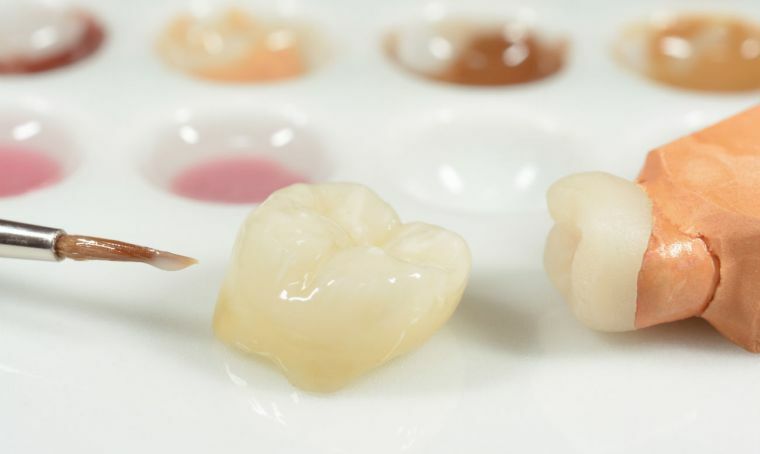
All these listed benefits suggest that the tabs on the teeth in some situations are much better than the seals.
A variety of solutions
There are such types of tabs:
- restorative is used for the full resumption of the color and shape of the dental crown;
- stump tab is needed to restore the lost tooth fragment, after which the crown is installed on it.
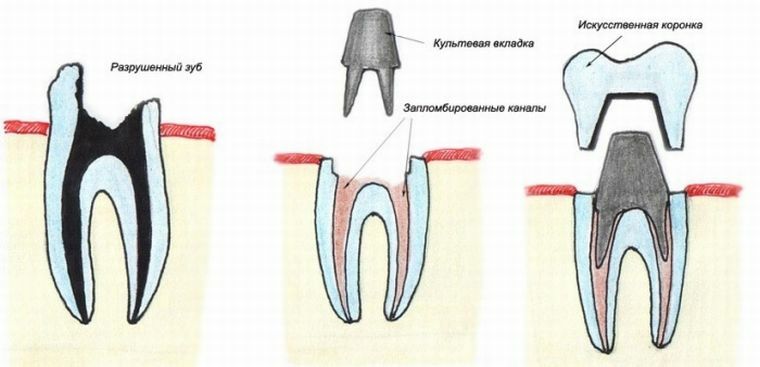
Also, the tooth tabs differ in the materials from which they are created:
- composite;
- ceramic;
- metal;
- metal-ceramic.
There are two main types of all-metal tabs. The difference between them lies in the materials from which they are made. It can be zirconia or ordinary pressed ceramics.
How does the ceramic insert on the teeth look like in reality - a photo compilation on the topic:
Method of manufacturing
The technology of manufacturing of dental inserts implies the observance of several basic stages:
- Removal of all dental tissues affected by carious formation and the subsequent formation of a cavity in which the insert will be placed.
- With the help of special materials, an impression is taken from the dentition, which is later used in a special dental laboratory, where specialists work on the casting of gypsum models.
- The resulting model is scanned and then digitally processed. In this way, the design is modeled.
- The data from the computer is transferred to the milling machine, where wrinkles are cut in automatic mode.
- After this workpiece passes the heat treatment procedure and they are applied a special porcelain mass.
- After creating the tab, the dentist performs a fixation procedure in the dental cavity, which takes only a few minutes.
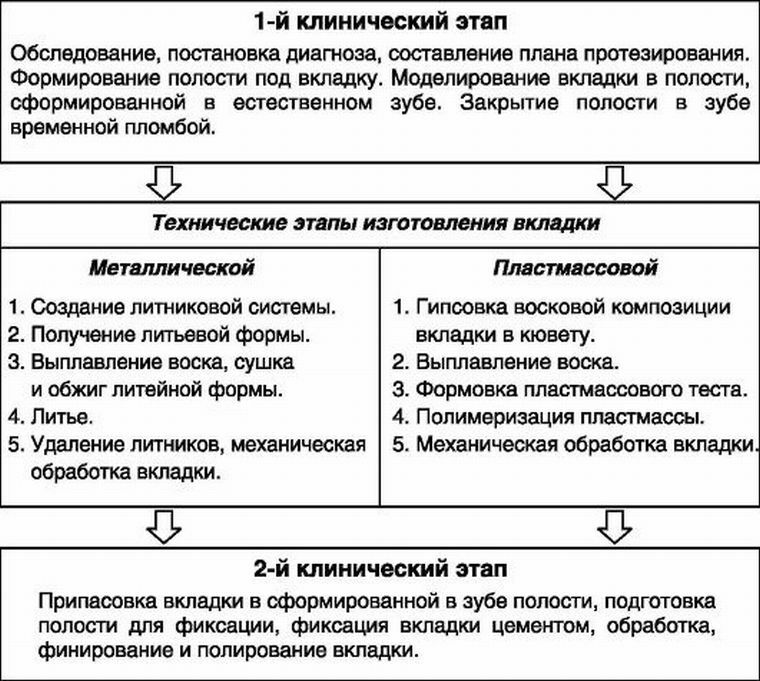
Installation process
The procedure for installing such tabs is almost the same as for conventional prosthetics:
- , first of all, it is necessary to conduct an attentive examination of the entire oral cavity and give all the necessary advice on sanation and the possibilities of making tabs;
- the dentist can carry out the necessary procedure for the removal of dental tissues afflicted with carious formations;
- then the doctor makes an impression of the processed tooth and sends it for further processing to the laboratory;
- a suitable dental insert is made of material that the patient has previously chosen;
- after this, the dentist tries on the prepared tab to make sure that the exact size and color of the teeth are repeated;
- if everything is completely suitable, the dentist performs its fixation using a special high-strength adhesive;
- at the final stage, the installed dental tab is polished so that there is no difference between the artificial product and the natural tooth tissues.
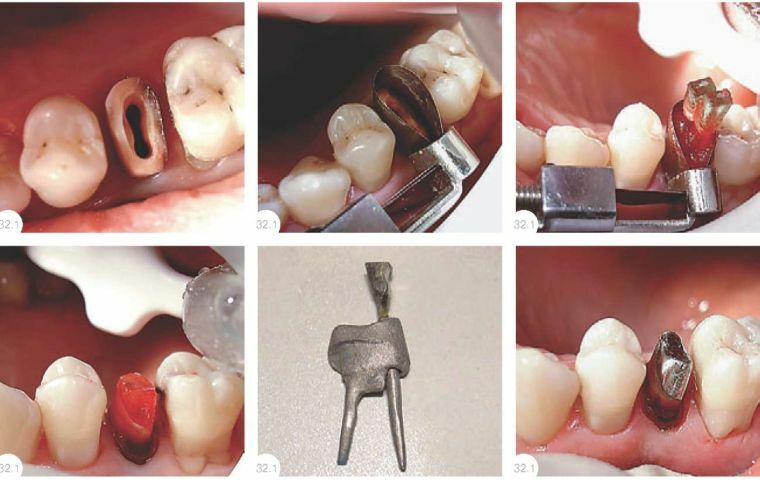
Installation of dental tabs visually
Indications and contraindications for the use of
The use of this type of prosthesis is recommended in such cases:
- the absence of any part of the teeth;
- implants are installed when the jaw does not have teeth at all;
- in some cases, removable dentures are poorly fixed, and tabs are just what you need;
- sometimes the tabs are applied when the bone tissue eventually becomes atrophied due to the constant absence of the tooth and the mechanical impact on the bone.
Before dental implantation, dentists are advised to donate blood for tests. In addition, it is desirable to take a snapshot of both jaws.
Also in some situations, there is a need for the following procedures:
- computed tomography;
- surgical templates;
- it is also necessary to determine the thickness of the mucous membrane in the area of the forthcoming implant fixation operation;
- Bio-potentialometry of the oral cavity is required before the installation of various dentures or implants.
Contraindications are most often determined on the basis of such data:
- information about the illnesses suffered by the patient before;
- results of a general clinical examination of the patient;
- information about the emotional and psychological state.
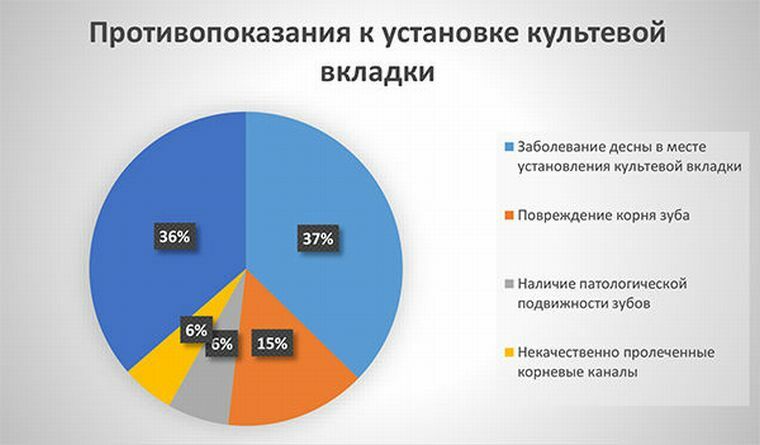
Practical experience on will replace neither that
It will be useful to study reviews in which patients and professionals voice their opinions about dental deposits.
Alina V., 43
Dentist, 17 years of experience
What determines the cost of
The tariffs for prosthetics using dental tabs depend on the variety of materials used in the manufacture:
- , the cost of an ordinary ceramic tab may approximately range from $ 200 to $ 240;
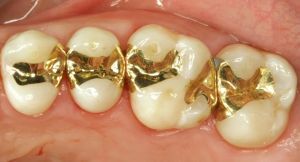
- the cost of products from of zirconium dioxide ranges from $ 250 to $ 300;
- the price for the elements, made of gold , is calculated on an individual basis, taking into account the cost of the work of the specialists involved and the quantity of the processed material;
- the cost of the tabs created from the of the chromium-cobalt alloy can be $ 65;
- prices for composite tabs are 25-30% higher than ordinary fillings, regardless of the clinic.
